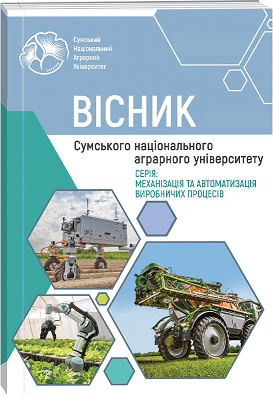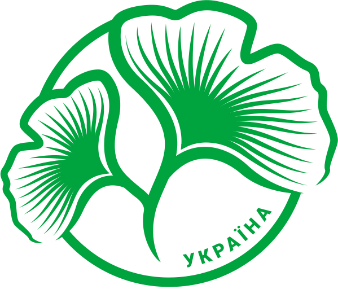INFLUENCE OF THE ADDENDUM MODIFICATION ON SPUR GEAR TRANSMISSION EFFICIENCY
Abstract
The paper presents an in-depth analysis of the efficiency of spur cylindrical gear transmissions depending on the addendum modification coefficient. The study focuses on enhancing the load-bearing capacity of the gear teeth, optimizing efficiency, and ensuring transmission durability with minimal power losses. Additional emphasis is placed on reducing noise and vibrations caused by backlash-induced impacts on the trailing teeth and analysing the fatigue contact and fatigue bending strengths of the gear teeth. The research aims to determine the influence of the addendum modification coefficient on the operational performance of gear transmissions. The finite element method (FEM) is utilized to evaluate the deflected mode parameters of the teeth and the contact pressure at different points along the meshing line. The study examines the effect of the addendum modification χ1 and χ2 on the efficiency, noise, and vibrations of the transmissions. It also explores power losses as a function of contact geometry variations resulting from tooth profile modifications. A detailed comparison is provided between two approaches for calculating power losses: the classical Niemann method, which assumes a constant average friction coefficient along the contact line, and Hai Xu’s modern methodology, which incorporates a variable friction coefficient based on non-Newtonian elastohydrodynamic lubrication (EHL) theory. The article includes simulations of localized energy losses in individual segments of the contact line and their integration to determine overall transmission efficiency metrics. The study also assesses the impact of the addendum modification coefficient on the fatigue contact and fatigue bending strengths of the gear teeth. Stress and contact pressure calculations under multi-cycle loading conditions illustrate the dependence of the stress state of the teeth on the profile’s geometric parameters. It is demonstrated that a rational distribution of addendum modification coefficients between the pinion and the gear can significantly improve transmission performance, achieving an optimal balance between efficiency and durability. The research emphasizes that selecting appropriate addendum modification coefficients not only reduces power losses but also decreases noise and vibration levels during operation. The article provides design recommendations for spur gear transmissions aimed at achieving maximum efficiency while maintaining high reliability. Specifically, an optimal range of addendum modification coefficients is proposed, tailored to various operational conditions and load requirements. The results indicate that tooth profile modification and the rational distribution of addendum modification coefficients can significantly enhance the working characteristics of gear transmissions. The conclusions presented have practical value for design engineers working on the development of high-efficiency gear transmissions with improved operational performance.
References
2. Reuleaux, F. (1887) Friction in Toothed Gearing Trans. ASME ASME. 8 45–85 doi: https://doi.org/10.1115/1.4061782.
3. G. Niemann, H. Winter (2003) Maschinenelemente – Band 2, Springer-Verlag, Berlin, Germany
4. Maag Gear Company Ltd., Maag gear book: calculation and practice of gear, gear drives, toothed couplings and synchronous clutch couplings, Maag Ltd., Zurich, Switzerland, 1990.
5. Mang, W. Dresel, (2007) Lubricants and lubrication, 2nd Ed. Wiley-VCH, Weinheim, Germay
6. B.R. Hohn, K. (2004) Michaelis, Influence of oil temperature on gear failures, Tribology International 37 (2) 103–109.
7. B.R. Hohn, K. Michaelis, H.P. Otto (2008) Minimised gear lubrication by a minimum oil/air flow rate, Wear 226 (3–4) 461–467.
8. R. Martins, J. Seabra, A. Brito, Ch. Seyfert, R. Luther, A. Igartua, (2007) Friction coefficient in FZG gears lubricated with industrial gear oils: biodegradable ester vs. mineral oil, Tribology International 39 (6) 512–521.
9. N.F.R. Cardoso, R.C. Martins, J.H.O. Seabra, (2009) Micropitting of carburized gears lubricated with biodegradable low-toxicity oils, Proceedings of the Institution of Mechanical Engineers, Part J: Journal of Engineering Tribology 223 (3) 481–495.
10. L. Magalhгes, R. Martins, C. Locateli, J. Seabra, (2010) Influence of tooth profile and oil formulation on gear power loss, Tribology International 43 (10) 1861–1871.
11. B.R. Hohn, K. Michaelis, (1994) Influence of lubricants on power loss of cylindrical gears, Tribology Transaction 37 161–167.
12. B.R. Hohn, K. Michaelis, T. Vollmer, Thermal rating of gear drives: balance between power loss and heat dissipation, American Gear Manufacturers Association, AGMA Technical Paper, 1996 96FTM8.
13. S. Baglioni, F. Cianetti, L. Landi, (2012) Influence of the addendum modification on spur gear efficiency, Mechanism and Machine Theory, Volume 49, Pp 216-233, ISSN 0094-114X, https://doi.org/10.1016/j.mechmachtheory.2011.10.007.
14. C.M. Denny, Mesh Friction in Gearing, AGMA Fall Technical Meeting, 1998, 98FTM2.
15. J.I. Pedrero, (1999) Determination of The Efficiency of Cylindrical Gear Sets, 4th World Congress on Gearing and Power Transmission, Paris, France, March,
16. Y. Michlin, V. Myunster, (2002) Determination of Power Losses in Gear Transmissions with Rolling and Sliding Friction Incorporated, Mechanism and Machine Theory 37 167.
17. Y.A. Misharin, (1958) Influence of The Friction Condition on The Magnitude of The Friction Coefficient in The Case of Rollers with Sliding, Proc. Int. Conf. On Gearing, 1958, Inst. Mech. Eng., London, pp. 159–164.
18. G.H. Benedict, B.W. Kelly, (1960) Instantaneous Coefficients of Gear Tooth Friction, Transactions of ASLEASLE Lubrication Conference, October, 1960, pp. 57–70.
19. J.P. O'Donoghue, A. Cameron, (1966) Friction and Temperature in Rolling Sliding Contacts, ASLE Transactions 9 186–194.
20. Y.N. Drozdov, Y.A. Gavrikov, (1967) Friction and Scoring Under the Conditions of Simultaneous Rolling and Sliding of Bodies, Wear 291–302.
21. ISO TC 60, TR 13989, 2000.
22. H. Xu, (2005) Development of a generalized mechanical efficiency prediction methodology for gear pairs, Ph.D. Thesis, The Ohio State University
23. Gitin M. Maitra, (1985) Handbook of Gear Design, TATA McGraw-Hill Publishing Company Limited, 7 West Patel Nagar, New Delhi 110 008
24. I. Atanasovska, V. Nikolic-Stanojevi, (2006) Influence of addendum modification coefficient on the gear load capacity, Fracture of Nano and Engineering Materials and Structures, in: Proceedings of the 16th European Conference of Fracture, pp. 787–788.
25. Z. Chen, W. Zhai, Y. Shao, K. Wang, (2016) Mesh stiffness evaluation of an internal spur gear pair with tooth profile shift, Sci. China Technol. Sci. 59 1–12.
26. Y. Guo, L.S. Randolph, R.G. Parker, (2014) Analytical determination of back-side contact gear mesh stiffness, Mech. Mach. Theory 78 263–271.
27. Z. Chen, Y. Shao, T.C. Lim, (2012) Non-linear dynamic simulation of gear response under the idling condition, Int. J. Automot. Technol. 13 541–552.
28. J. Dion, S.L. Moyne, G. Chevallier, H. Sebbah, (2009) Gear impacts and idle gear noise: experimental study and non-linear dynamic model, Mech. Syst. Signal Process. 23 2608–2628.
29. M. Wang, W. Zhao, R. Manoj, (2002) Numerical modeling and analysis of automotive transmission rattle, J. Vib. Control 8 921–943.
30. R.Y. Yakoub, M. Corrado, A. Forcelli, T. Pappalardo, S. Dutre, Prediction of system-level gear rattle using multibody and vibro-acustic techaniques, SAE Papers No. 2004-32-0063.
31. M. Divandari, B.H. Aghdam, R. Barzamini, (2012) Tooth profile modification and its effect on spur gear pair vibration in presence of localized tooth defect, J. Mech. 28 373–381.
32. W. Yu, C.K. Mechefske, (2016) Analytical modeling of spur gear corner contact effects, Mech. Mach. Theory 96 146–164.
33. A. Kahraman, R. Singh, (1991) Interactions between time-varying mesh stiffness and clearance non-linarites in a geared system, J. Sound Vib. 146 135–156.
34. G.W. Blankenship, A. Kahraman, (1995) Steady state forced response of a mechanical oscillator with combined parametric excitation and clearance type nonlinearity, J. Sound Vib. 185 743–765. 37.
35. J. Wang, T.C. Lim, (2009) Effect of tooth mesh stiffness asymmetric nonlinearity for drive and coast side on hypoid gear dynamics, J. Sound Vib. 319 885–903.
36. KISSsoft AG, KISSsoft calculation program for machine design, 2010 Hombrechtikon, Switzerland.
37. DIN 3992, Addendum modification of external spur and helical gears, 1/3/1964.
38. Wennian Yu, Chris K. Mechefske, Markus Timusk, (2017) Influence of the addendum modification on spur gear backside mesh stiffness and dynamics, Journal of Sound and Vibration, Volume 389, Pages 183-201, ISSN 0022-460X, https://doi.org/10.1016/j.jsv.2016.11.030.

 ISSN
ISSN  ISSN
ISSN 



